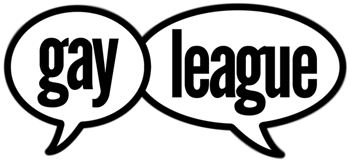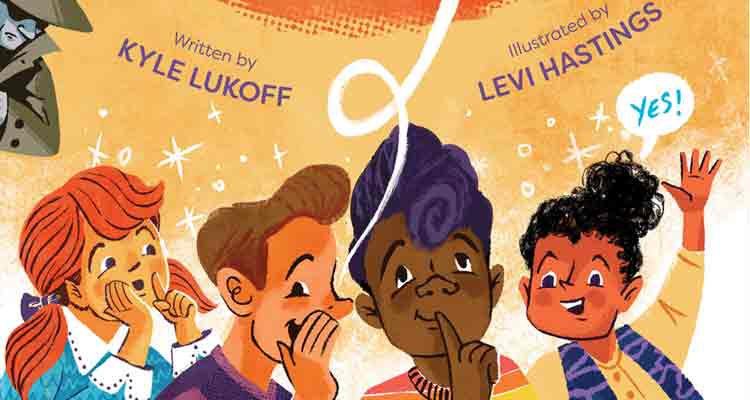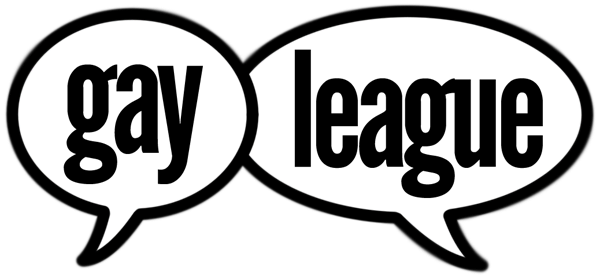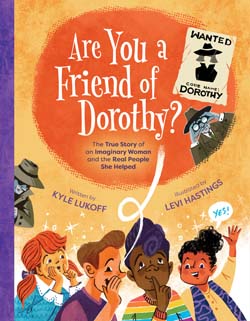
Kyle Lukoff
Levi Hastings
$19.99 (HC) / $10.99 (digital)
Simon & Schuster
Are You A Friend Of Dorothy? is the title of a recently released children’s picture book by writer Kyle Lukoff and artist Levi Hastings. Lukoff is known for writing children’s picture books such as If You’re A Kid Like Gavin, Too Bright To See, and When Aidan Became A Brother while graphic designer and illustrator Hastings may be best known to the queer comics world for his artistic collaboration of writer Josh Trujillo on the Washington’s Gay General graphic novel.
“We Are Everywhere” and “We Have Always Been Here” are phrases that have popped up a lot recently. While we are now and have always been everywhere it doesn’t mean queer people in the past were able to find easily others while staying safe from harm. To answer the challenge of finding other queer people some individuals took to wearing red ties or green carnations on their clothing while countless other queer people asked a simple question: “are your a friend of Dorothy?”
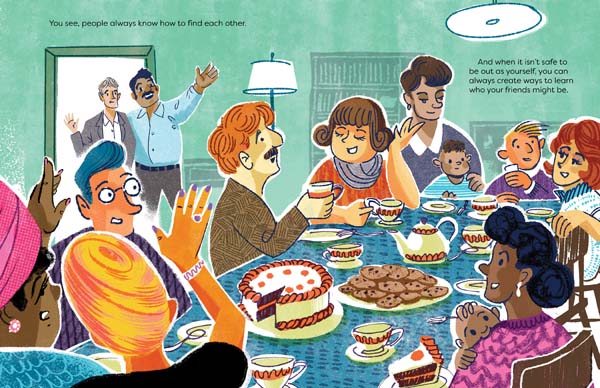
Inside the book’s covers Lukoff and Hastings give young readers a view into those all too often precarious times. The text begins with Lukoff simply posing the titular question and giving examples of people in various situations when it would be wise for them to rely on speaking in coded language. As the story progresses page by page Lukoff introduces new aspects regarding the historical period. There are many depictions of queer life and the ways in which joy and happiness prevailed despite duress. From dances to parties to game nights to innocuous chats to dinner gatherings to camaraderie between sailors at sea — all of which came about after someone answered “Yes, I’m a friend of Dorothy.”
The creators also illustrate the sobering aspects of being a queer person in these times and their reasons for wanting to remain safe: anxiety, a job loss, being arrested, and being committed for treatment which is a bit nicer way to call conversion therapy. These and some later passages are serious topics which may raise concern in the minds of some young readers. I believe these instance create good opportunities for parents and other adults in a child’s life to encourage them to express their thoughts and concerns and in turn engage them in conversations on their individual levels. ”=
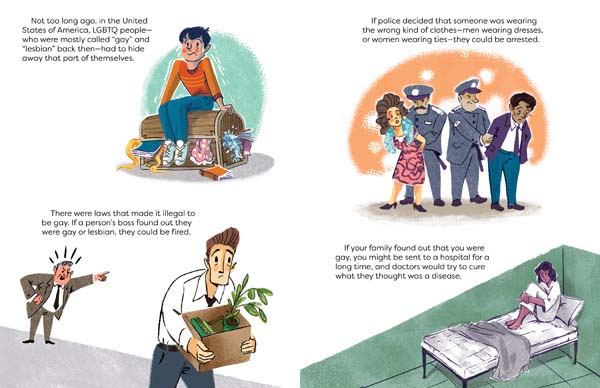
The subject of Dorothy’s identity is also explored and before reading this book I’d assumed “Dorothy” referred to Judy Garland’s character in Wizard of Oz simply because of the movie’s iconic queer status. It may be true though Lukoff and Hastings mention another famous Dorothy from New York City who was alive at the time who may have been inspiration. We’ll never know if it was Judy’s Dorothy or the New York Dorothy or another woman named Dorothy and that’s okay because some things should remain mysteries.
Fairly or not, art carries so much of the load in any creative storytelling collaboration involving media such as graphic novels and picture books. Perhaps a bit more so when it comes to young children who have yet to learn to read or developing. Young children’s focus and imagination will be drawn into the storytelling experience by the vibrantly colored art that plays across oversized pages. Hastings’ style has a pleasingly retro aesthetic reminiscent of magazine and book illustrations from my long ago childhood.
Throughout the text Lukoff uses different words and acronyms to talk about members of the LGBTQA+ community. Since language changes over time these phrases can be confusing at times even if you’re not a cis straight adult. Not to worry though because Lukoff gives concise context for each of them.
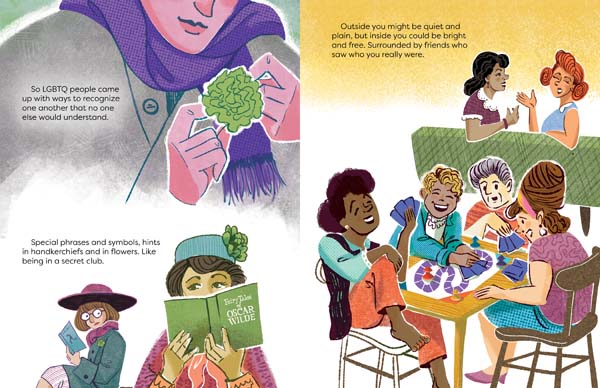
Some adults may be chanting “let kids be kids!” when learning about this book. Of course, this isn’t you, dear reader, though it might be someone you know. I’d like to tell a story about a five year old boy who loved to watch cartoons and eat cherries and popsicles. He was also shy because one ear stuck out and he had a stutter and an awful time pronouncing some sounds. One day he realized he had a big secret. He didn’t know what the secret was…just that he was different and nobody else could know about it.
A year later the now six year old boy stood by his mother while a beloved relative warned his mother to be “cut the apron strings” or she would have a sissy on her hands. The boy thought “It’s too late, that’s what I am” and for a very many years he pretended not to be scared.
Yes, that little boy was me and the story isn’t unique, not even the silly single Dumbo the elephant ear. This book or any other like it literally could not have existed at that time. Publishers would have refused to buy it and printers would have refused to print copies at all on grounds that it promoted deviancy. We’ve come such a long way since those long ago years but there are still and again groups of people who want to make queer people invisible. Such ideology makes this and similar books all the more important for the well being of young children who may be discovering they’re different as well and for children of parents who wish to teach empathy and kindness.
The intended audience for this book is children ages four to eight and of course their parents. It is made in such a way that curious adults of any age might learn a bit of history that isn’t taught in schools
Share this book and a conversation about it with a young reader in your life! Don’t forget cookies!
Visit Kyle Lukoff’s site and also Levi Hastings’!
Are You A Friend Of Dorothy is in bookstores now. Copies may be purchased from Bookshop. Bookshop can help you find an indy bookshop in your area if you want to shop in person.
Several retailers stocking the book may be found on the publisher’s page.
If all else fails or you prefer, Amazon has print and digital copies.

